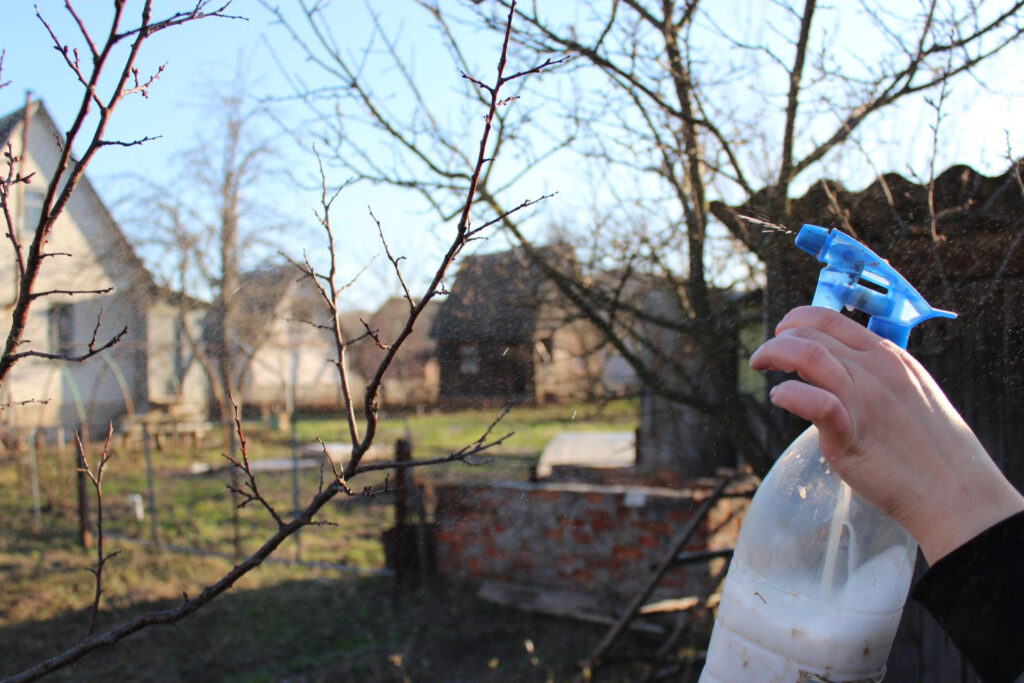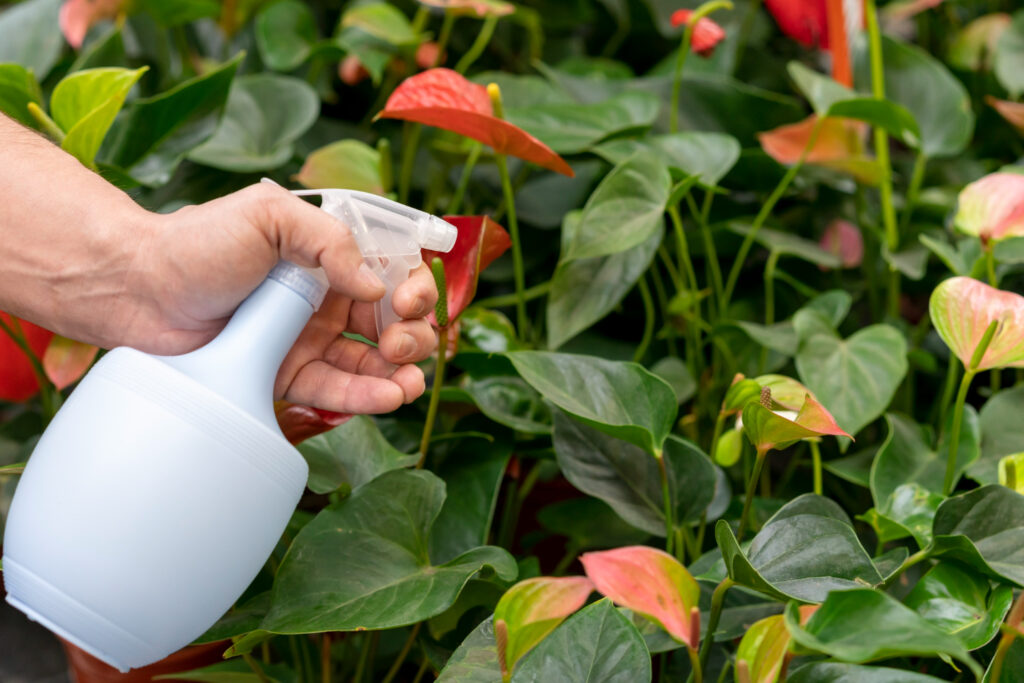DIY Bug Spray with Essential Oils
In the warm months of the year, there's nothing quite as enjoyable as spending time outdoors, whether it's camping, hiking, picnicking, or simply lounging in your backyard. However, one persistent annoyance that can put a damper on your outdoor adventures is those pesky bugs! Mosquitoes, ticks, flies, and other insects seem to be ever-present, and their bites can be not only irritating but also carry the risk of diseases.
The good news is that you can protect yourself from these bothersome critters without resorting to chemical-laden commercial bug sprays. Instead, you can create your very own DIY bug spray with essential oils. In this comprehensive guide, we'll explore the benefits of using repellent essential oils recipe for bug repellent and provide you with a range of natural and effective DIY bug spray recipes. Say goodbye to those unwanted bug bites and hello to enjoying the great outdoors comfortably and safely.
Understanding the Power of Essential Oils in Bug Repellent
The historical use of essential oils dates back centuries, with their multifaceted applications spanning from aromatics to therapeutic remedies and medicinal aids. One particularly intriguing aspect of essential oils lies in their ability to serve as natural insect repellents. When harnessed in bug repellent formulations, these oils prove highly effective in creating an impermeable shield against unwanted insects.
The potency of essential oils as insect repellents can be attributed to their intricate chemical compositions. Within these oils, various compounds exist that insects find either repulsive or detrimental to their well-being. To elucidate this phenomenon, let's delve into the mechanisms at play. Firstly, certain essential oils emit fragrances that disorient insects, hampering their ability to locate their intended targets—primarily, you.
Furthermore, some of these oils have the remarkable capability to disrupt the nervous systems of insects, effectively deterring them from venturing into treated areas. This dual-action approach contributes to the overall efficacy of essential oil organic in repelling bugs, making them an invaluable resource for those seeking a natural solution to keep insects at bay.
Choosing the Right Essential Oils for Your DIY Bug Spray
Before we embark on crafting your very own bug spray, it's crucial to delve into the realm of essential oils. Understanding the factors that influence your choice of essential oils is essential to creating a bug-repellent that is both effective and tailored to your preferences.
Factors to Consider When Selecting Essential Oils
- Repellent Properties: To craft a potent bug spray, prioritize essential oils renowned for their insect-repelling prowess. Examples include citronella, eucalyptus, lemongrass, and lavender. Each of these oils possesses unique compounds that deter a variety of pesky insects.
- Scent Preferences: While bug-repelling efficacy is paramount, your comfort is equally important. Opt for essential oils with scents that you find pleasing, as you'll be wearing this spray. Scents like lavender offer a calming and pleasant aroma, making your bug spray experience more enjoyable.
- Skin Sensitivity: Take into account the sensitivity of your skin and that of anyone who will be using the bug spray. Essential oils can vary in their potential to cause skin irritation, so choose oils that are gentle on your skin type. Diluting essential oils with a carrier oil can mitigate any potential irritation.
- Duration of Protection: Different essential oils provide varying degrees of protection and longevity. Some oils offer shorter bursts of defense, while others provide extended coverage. Consider your intended use and how frequently you're willing to reapply the spray.
- Personal Allergies: It's crucial to ensure that you and your companions are not allergic to the chosen essential oils. Perform patch tests if necessary to rule out any adverse reactions before applying the bug spray more broadly.

Essential Oils with Proven Bug-Repelling Properties
When venturing into the realm of DIY bug spray creation, having a comprehensive understanding of essential oils renowned for their bug-repelling prowess is paramount. These oils serve as the backbone of your bug-fighting concoction, offering both protection and a pleasant aroma. Here are some essential oils with proven bug-repelling properties:
Citronella Oil
Derived from the lemongrass plant, citronella oil stands as one of the most well-known and highly effective natural insect repellents. It excels in warding off mosquitoes, ensuring you enjoy your outdoor adventures without incessant buzzing.
Lemon Eucalyptus Oil
Recognized and recommended by the CDC (Centers for Disease Control and Prevention) as an effective mosquito deterrent, lemon eucalyptus oil is a powerful ally in the fight against these bloodthirsty pests.
Lavender Oil
While not as potent as citronella or lemon eucalyptus, lavender oil brings a soothing and pleasant scent to your bug spray. It offers a degree of protection against mosquitoes and flies, making your outdoor experience more enjoyable.
Peppermint Oil
With its invigorating and robust aroma, peppermint oil is adept at deterring a variety of insects, including ants and spiders. Its refreshing scent adds an extra layer of comfort to your bug-repelling efforts.
Tea Tree Oil
Renowned for its antiseptic properties, tea tree oil goes beyond its medicinal benefits to help keep insects at bay. This versatile oil can serve as both a protector and a cleanser for your skin.
Geranium Oil
If your concerns center on ticks, geranium oil is your go-to option. It excels at repelling these tiny arachnids and is frequently used in natural tick repellents, ensuring you remain tick-free during outdoor excursions.

DIY Bug Spray Recipes for Every Occasion
Now that you have a basic understanding of mosquito repellent essential oil and their bug-repelling properties, let's dive into some DIY bug spray recipes that you can tailor to your specific needs.
Simple Lemon Eucalyptus Bug Spray
Bug repellent sprays are a vital asset for outdoor enthusiasts, and creating your own can be both cost-effective and environmentally friendly. Here's a detailed recipe for a simple yet effective lemon eucalyptus bug spray:
Ingredients
- 10 drops of high-quality lemon eucalyptus essential oil
- 2 oz of witch hazel or vodka (alcohol acts as a preservative)
- 2 oz of distilled water
- 1 teaspoon of vegetable glycerin (optional, for added longevity)
Instructions
- Select a Suitable Container: Begin by choosing a small, clean spray bottle to store your bug repellent. A dark-colored bottle is preferable as it helps protect the essential oil from degradation due to light exposure.
- Mix Lemon Eucalyptus Oil: Carefully measure out 10 drops of lemon eucalyptus essential oil, renowned for its efficacy in repelling mosquitoes, and add it to your chosen spray bottle.
- Blend with Witch Hazel or Vodka: To ensure that your bug spray remains stable and free from microbial growth, pour 2 ounces of witch hazel or vodka into the bottle. The alcohol content in vodka acts as a preservative, extending the shelf life of your spray.
- Incorporate Distilled Water: Next, add 2 ounces of distilled water to the mixture. Distilled water helps dilute the essential oil and prevents any potential skin irritation that may occur if the spray is too concentrated.
- Optional: Introduce Vegetable Glycerin: If you desire a bug spray with longer-lasting effects, consider adding 1 teaspoon of vegetable glycerin to the mix. This natural ingredient can enhance the staying power of the repellent on your skin.
- Shake Vigorously: Seal the spray bottle tightly and give it a thorough shake to ensure all the components are well combined. This step should be repeated before each use to distribute the essential oil evenly.
Usage
When venturing outdoors, apply this lemon eucalyptus bug spray evenly on exposed skin and clothing. Remember to reapply as needed, especially after swimming or heavy sweating. Avoid spraying it directly on your face; instead, spray it onto your hands and then apply it to your face, being cautious around the eyes.
Citrusy All-Purpose Bug Spray
When it comes to fending off a variety of insects, a citrusy all-purpose bug spray can be a formidable ally during your outdoor adventures. To create a well-rounded bug repellent with a refreshing scent, consider the following recipe:
Ingredients:
- 10 drops of citronella essential oil (a potent mosquito repellent)
- 10 drops of lemon essential oil (adds a bright and uplifting fragrance)
- 5 drops of eucalyptus essential oil (known for its effectiveness against mosquitoes and flies)
- 5 drops of peppermint essential oil (a natural deterrent for ants and spiders)
- 2 oz of distilled water (serves as a diluent)
- 2 oz of witch hazel (acts as a preservative)
Instructions:
- Prepare a Suitable Container: Begin by selecting a clean and appropriately sized spray bottle to contain your citrusy bug spray. A dark-colored bottle is recommended to protect the essential oils from light exposure.
- Combine Essential Oils: In the chosen spray bottle, carefully add the essential oils: 10 drops of citronella, 10 drops of lemon, 5 drops of eucalyptus, and 5 drops of peppermint. Each of these oils contributes to the repellent's effectiveness against a range of insects.
- Blend with Distilled Water: To dilute the essential oils and ensure safe application to the skin, pour 2 ounces of distilled water into the bottle.
- Incorporate Witch Hazel: Next, add 2 ounces of witch hazel to the mixture. Witch hazel not only contributes to the stability of your bug spray but also provides an astringent effect that can be soothing to the skin.
- Shake Thoroughly: Seal the spray bottle tightly and give it a good shake to thoroughly mix all the ingredients. Remember to shake the bottle before each use to ensure an even distribution of the essential oils.
Usage:
Apply this citrusy all-purpose bug spray to exposed skin and clothing as needed to ward off insects. However, exercise caution to avoid contact with your eyes and mucous membranes. For facial application, spray the repellent onto your hands first, and then gently apply it to your face, avoiding the eye area.
Herbal Garden Bug Spray
Nature's bountiful herbs can offer an effective and fragrant solution to ward off pesky insects. By using this Herbal Garden Bug Spray, you can create a natural and aromatic repellent tailored to your outdoor needs. Here's a comprehensive recipe:
Ingredients:
- 10 drops of lavender essential oil (known for its calming scent and mosquito-repelling properties)
- 10 drops of geranium essential oil (an excellent tick deterrent)
- 5 drops of rosemary essential oil (repels a variety of insects, including mosquitoes)
- 2 oz of distilled water (serves as a diluent)
- 2 oz of witch hazel (acts as a preservative)
Instructions:
- Choose the Right Container: Begin by selecting a clean spray bottle of appropriate size to accommodate your Herbal Garden Bug Spray. Opt for a dark-colored bottle to protect the essential oils from potential light exposure.
- Combine the Essential Oils: In the selected spray bottle, add 10 drops of lavender oil, 10 drops of geranium oil, and 5 drops of rosemary oil. Each of these oils brings unique insect-repelling properties to the mix.
- Blend with Distilled Water: To ensure safe and skin-friendly application, pour 2 ounces of distilled water into the spray bottle, effectively diluting the essential oils.
- Incorporate Witch Hazel: Next, introduce 2 ounces of witch hazel to the mixture. Witch hazel not only serves as a preservative but also possesses mild astringent properties that can be soothing to the skin.
- Thoroughly Mix: Seal the spray bottle tightly and shake it vigorously to blend all the ingredients thoroughly. Remember to shake the bottle before each use to ensure an even distribution of the essential oils.
Usage:
Apply your Herbal Garden Bug Spray generously to exposed skin and clothing to deter insects during your outdoor escapades. For facial application, spray the repellent onto your hands and then gently apply it to your face, avoiding contact with the eyes.
Outdoor Adventure Bug Spray
Exploring the great outdoors can be exhilarating, but it often comes with unwanted guests – insects. To ensure your outdoor adventures are enjoyable and bug-free, consider creating your own Outdoor Adventure Bug Spray using the following comprehensive recipe:
Ingredients:
- 10 drops of tea tree essential oil (recognized for its insect-repelling properties)
- 10 drops of cedarwood essential oil (effectively deters a variety of outdoor insects)
- 5 drops of patchouli essential oil (adds a natural, earthy aroma)
- 2 oz of distilled water (serves as a diluent)
- 2 oz of vodka or rubbing alcohol (acts as a preservative and enhances longevity)
Instructions:
- Select the Appropriate Container: Start by choosing a clean spray bottle that can accommodate your Outdoor Adventure Bug Spray. Opt for a dark-colored bottle to protect the essential oils from potential light exposure.
- Blend Essential Oils: In the chosen spray bottle, add 10 drops of tea tree oil, 10 drops of cedarwood oil, and 5 drops of patchouli oil. Each of these oils is chosen for its unique ability to repel outdoor insects effectively.
- Incorporate Distilled Water and Alcohol: Pour 2 ounces of distilled water into the bottle to dilute the essential oils and ensure safe skin application. Additionally, add 2 ounces of vodka or rubbing alcohol, which not only acts as a preservative but also aids in the evaporation process, allowing the spray to dry quickly on your skin.
- Thorough Mixing: Seal the spray bottle tightly and shake it vigorously to ensure all the ingredients are thoroughly mixed. Be sure to shake the bottle before each use to guarantee an even distribution of the essential oils.
Usage:
Apply your Outdoor Adventure Bug Spray generously to exposed skin and clothing before embarking on your outdoor activities. For facial application, spray the repellent onto your hands and then gently apply it to your face, taking care to avoid contact with the eyes.
Kid-Friendly Bug Spray
When it comes to protecting your little ones from insects during outdoor playtime, a specially formulated bug spray is a must-have. This Kid-Friendly Bug Spray recipe not only offers effective insect repellency but also takes into account the sensitive nature of children's skin. Here's a detailed recipe:
Ingredients:
- 5 drops of lavender essential oil (known for its gentle and soothing properties)
- 5 drops of geranium essential oil (a mild yet effective insect repellent)
- 5 drops of cedarwood essential oil (offers protection against various outdoor insects)
- 2 oz of distilled water (provides a safe diluent)
- 2 oz of witch hazel (acts as a preservative while being gentle on skin)
Instructions:
- Select an Appropriate Container: Begin by choosing a clean and suitable spray bottle to house your Kid-Friendly Bug Spray. Opt for a transparent or lightly colored bottle for easy visibility of the spray's contents.
- Combine Essential Oils: In the selected spray bottle, add 5 drops each of lavender, geranium, and cedarwood essential oils. These oils are chosen not only for their insect-repelling qualities but also for their gentle nature on children's skin.
- Blend with Distilled Water and Witch Hazel: Pour 2 ounces of distilled water into the bottle to ensure that the essential oils are properly diluted and safe for children's skin. Add 2 ounces of witch hazel, which serves as both a preservative and a skin-soothing ingredient.
- Mix Thoroughly: Seal the spray bottle tightly and shake it thoroughly to ensure all the ingredients are well mixed. Always remember to shake the bottle before each use to achieve an even distribution of the essential oils.
Usage:
Apply the Kid-Friendly Bug Spray generously to your children's exposed skin and clothing whenever they are playing outside. Avoid spraying it directly onto their faces. Instead, spray the repellent onto your hands and then gently apply it to their faces, taking care to avoid the eyes and mouth.

Storing Your Homemade Bug Spray
To maintain the efficacy of your to make homemade bug spray and ensure it's ready for whenever you need it, follow these storage guidelines:
Cool and Dark Location
Safeguard your bug spray by storing it in a cool, dark place, away from direct sunlight and excessive heat. Ultraviolet (UV) rays from the sun can degrade the essential oils in your spray, potentially reducing its effectiveness.
Shake Before Use
Before applying your bug spray, always shake the bottle vigorously. This step is essential to ensure that the essential oils and other ingredients are properly mixed. Over time, these components can separate, so shaking before each use guarantees an even distribution.
Check for Spoilage
It's crucial to be aware that natural bug sprays may have a shorter shelf life compared to commercial alternatives. Regularly inspect your spray for any signs of spoilage, such as changes in color, scent, or consistency. If you detect any of these alterations, it's advisable to discard the spray and prepare a fresh batch.
Conclusion
Creating your DIY bug spray with essential oils is an eco-friendly and natural way to protect yourself and your loved ones from pesky insects. With a variety of essential oils to choose from and a range of recipes to suit different needs, you can find the perfect bug repellent that works for you.
By understanding the science behind essential oils and their bug-repelling properties, you can confidently craft your bug spray tailored to your preferences. Remember to follow proper application techniques and store your bug spray correctly to ensure its effectiveness.
Say goodbye to chemical-laden bug sprays and embrace the power of essential oils for a bug-free outdoor experience. With these natural and effective recipes, you'll be able to enjoy the great outdoors comfortably and safely, all while supporting your overall well-being.
Sources
https://www.ncbi.nlm.nih.gov/pmc/articles/PMC6189689/
https://www.middletownct.gov/DocumentCenter/View/20132/Recreation-Recycles-DIY-Bug-Spray?bidId=




